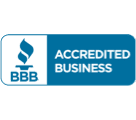This article was originally published on Contact Center Pipeline and can be viewed here.
How well-executed outbound customer contacts can deliver excellent CXs.
Providing excellent customer experiences (CXs) is important for both business-to-customer (B2C) and business-to-business (B2B) contact centers.
However, there are some clear distinctions. The stakes are usually higher with B2B customers. A poor experience in a B2C contact center may lead to the loss of one customer (and possibly their friends, family, and acquaintances), while a poor experience in a B2B contact center could lead to the loss of a multitude of sales.
And when the B2B contact center provides outbound customer service, the key is for businesses to be proactive and solve potential problems before they become bigger issues.
Business customers are often looking for a different type of CX than consumer customers. Their expectations are different, and they typically know exactly what they want or need. They are more educated about the purpose of your outbound calls, and they base their expectations about what the overall experience should be on prior knowledge.
What these buyers want is to be shown that they are truly valued business partners. They want the B2B associates who are calling them to recognize their histories together and the success that has come from their working relationships.
The CX focus should be on enhancing the relationship in a businesslike, impactful, and straightforward manner. These B2B customers know what they paid last year versus what they’re paying this year. They also know that shipping, material, and labor costs, are going up. But they still want strategic solutions that will work for them.
SUCCESS STORY – HEALTHCARE
Healthcare insurance companies serve both members (patients) and providers in their contact centers. Dealing with providers is essentially a B2B function while dealing with members is B2C.
Members typically call to find out about their copays and claims while providers call to discuss the claims of multiple patients. While insurance companies compete for both providers and members, the potential magnitude of loss due to poor CXs on a provider account is usually much greater than on a member account.
A proactive outbound calling campaign to providers could help an insurance company mitigate this risk and improve its provider retention rate. For if a hospital system has a problem with an insurance company, they may decide to discontinue their relationship.
For example, when a hospital that does 1,200 MRIs per month calls to find out why an insurance company rejected 90% of its claims, not only must the insurance company’s contact center associates have good answers but the experience of getting to the answers must be well-orchestrated too. Otherwise, the insurance company will risk losing the hospital as a client, resulting in the loss of many members.
A well-crafted outbound calling campaign might then proactively deliver tips for providers on improving claims acceptance rates through proper coding, the avoidance of common errors, etc.
If a provider wants to discuss five different claims, they expect the associate to find the time for what could be a lengthy call and they don’t want to feel rushed due to AHT concerns. If that happens because the associate is trying to stay compliant with their AHT metrics, the provider will likely not feel well taken care of and the outcome could be problematic.
In situations like this, whether the call is outbound or inbound, metrics such as AHT may have to take a back seat to ensure providers are given the time they expect and deserve. We made this recommendation to a healthcare insurance client that implemented it and found that it greatly improved their provider experience and helped them retain providers in the long run.
Tips for Improving B2B CX
1. KNOW YOUR CUSTOMER. UNDERSTAND THEIR NEEDS.
There are many types of business customers and knowing what type of customer you are dealing with is key to helping them face their unique challenges.
If your customer calls every day with a different request, or needs to interact often, perhaps you should reach out to them and offer to set them up with a self-service portal. There they can get the information they need and make changes on their own.
While a traditional website is likely sufficient for B2B customers that only order standard products, an interactive portal can allow larger clients to customize the products they order. This is one way to create stellar experiences for your most valuable customers. The expense tied to this may well pay for itself.
If a self-service portal is not an option, consider reaching out to these customers and offer to provide an account manager they can contact directly with any problems that may arise.
If the customer is large and/or makes many purchases, they may need an account manager to also work out logistics for them. But a customer that buys one or two products a year could easily get by without one. It’s important, then, to know who you are dealing with and clearly understand their needs and offer unique solutions.
An increasing number of businesses are selling their products both directly to customers and to other retailers/resellers to take advantage of B2C and B2B sales opportunities. We recommend that clients with multiple customer segments keep their contact centers separate and avoid any temptation to have the same associates deal with both B2B and B2C customers.
Download Part II of Northridge's State of Customer Experience 2023 Research Report for more CX insights!
For example, an outbound calling campaign may be an ideal way to keep business customers engaged between orders. Keeping the contact centers separate also allows businesses to provide associates with appropriate training and resources for each customer segment. It also allows associates to focus on the skills and KPIs that align with the customer segment they are assigned to engage with.
2. OFFER PROACTIVE SOLUTIONS AND SERVICES.
Proactive servicing involves offering your customer a solution before they realize there is a problem. For example, imagine that a large B2B customer ordered a million jackets and you found out they were stuck on a barge in the Panama Canal and would be delayed several weeks.
Rather than waiting for problems to ensue, it would be best for a member of the outbound customer service team to proactively reach out to this customer with a solution that aligns with whatever product can be quickly secured.
In this case, perhaps the customer would be willing to settle for a smaller quantity of jackets or in a different color arriving sooner if an associate reaches out proactively.
Hopefully, any anger or frustration the problem ultimately causes your customer will be somewhat offset by the proactive solutions and service that the associate provides.
SUCCESS STORY – SCRAP METAL
We have a client that sells scrap materials. They regularly charge customers a small daily storage fee. However, our client recently lost a multibillion-dollar account that was in the top 2% of their customer base. That is because they wouldn’t waive this $25 fee when asked. It created enough bad will for the customer to walk away and take their business elsewhere.
We helped this client understand that every touchpoint along a customer journey matters. It’s important to see the big picture while also focusing on the small details that make a stellar CX.
Customers, especially important customers like this one, expect to be treated well and small issues can quickly become important concerns to them. Having contact center associates proactively reach out to deliver good news to customers can make a big difference and is a smart approach.
Our client took our recommendation to heart and began proactively reaching out to important customers and relaxing their rules, when appropriate, to demonstrate how much they value customer loyalty. This improved their customer retention rate.
3. MAKE IT EASY AND EFFICIENT FOR YOUR CUSTOMERS TO DO BUSINESS WITH YOU.
All businesses appreciate efficiency and the opportunity to make the best use of their funds and resources. It’s also important to remember that the easier you can make it for business customers to work with you, the more likely they’re going to return with more business and recommend other customers to you.
Sometimes, though, this means bending the rules. Like greater flexibility on account terms (i.e., lower rates, longer repayment terms, waiving fees), offering free or expedited shipping, and providing a dedicated service line with faster response: and proactive alerts.
Losing a B2B customer is a lot riskier than losing a B2C customer. The flip side is that if you offer a business customer stellar customer service, the benefit is also going to be bigger.
There are a lot of good reasons to try to get it right the first time. A good way to start is to have your outbound team reach out to your valued business customers to let them know that you are willing to do whatever you can (including bending the rules), to make transactions with your company easier for them.
Proactive outbound can improve the B2B CX in important ways:
- It provides a human connection. People tend to trust businesses that provide human communication more than those that don’t. Proactively contacting customers can help businesses build better relationships with customers and gain a better understanding of their objectives so they can develop improved strategies for marketing to them.
- It allows time for preparation. Scripts are often used when making outbound calls to customers because a well-crafted pitch is more likely to capture a customer’s attention. Outbound calls allow associates time to practice their scripts and be better prepared to handle calls.
- It adds a personalized touch. Outbound calling can be a highly targeted and personalized form of communication. Researching customers before calling them gives associates a better idea of who they will be talking to and allows associates to be prepared to immediately address customer pain points.
Today’s customers, whether B2C or B2B, have more options than ever before. A good rule of thumb is that it costs four times as much to get a new customer as it does to keep those you have.
It’s important to understand who your customers are and to segment them appropriately so that you can provide each segment with the type of CX that meets or exceeds their expectations.
Businesses don’t get too many chances to make the right impression so they must get it right the first time. Proactive outbound customer service can help!




